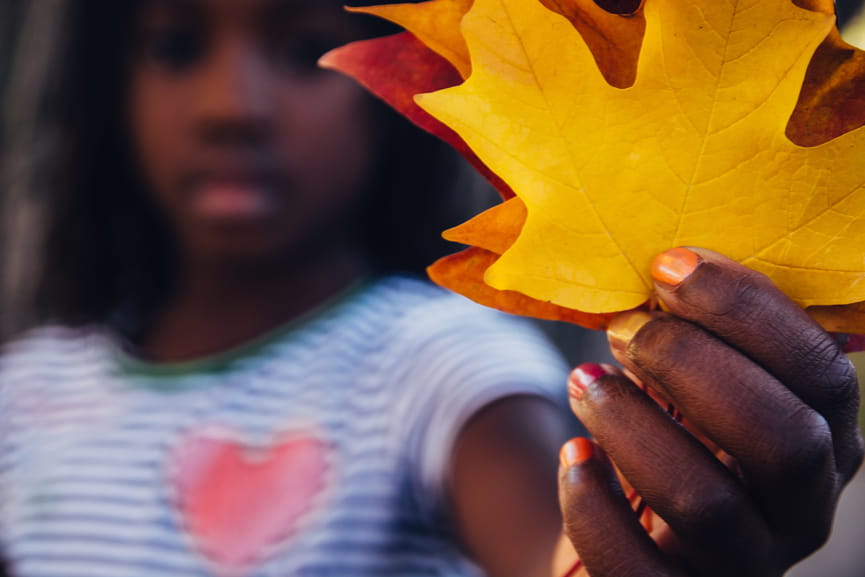Science for the Season! 7 Ways to Learn with Fall Leaves

Children are born curious, and at this time of year, leaves make excellent teachers. To a child, the color-changing displays of leaves are a kind of wondrous magic, giving you the perfect tool to introduce her to the fantastic world of science and nature. From honing young children’s powers of observation to practicing their fine-motor skills, these seven activities make the most of the season!
1. Guess What Color the Trees on Your Street Will Be.
Children are natural scientists, and this activity encourages them to sharpen their observation and prediction skills. Here’s how: Make a simple map of your neighborhood streets, and go on a walk to look for trees that have not yet put on their fall colors. Mark the location of the trees on your map and ask your child to guess what color each tree’s leaves will turn. Go back a week or two later to see if his guesses were right. Even more fun: Collect a leaf from each tree while it’s green and on your second walk, gather one after it’s turned to look at the cool color changes together.
2. Learn the Parts of Leaves.
Grab a magnifying glass or a loupe for a close-up! See if you and your child can spot all the different parts of a leaf— and learn some new vocabulary while you’re at it. The blade is the flat, “leafy” part of the leaf, and the stem is also called a petiole. (Yes, you might even build your vocabulary too!) The veins are those patterned lines in the leaf that carry food and water, but they also act as a “skeleton” to give the leaf its shape. The large vein running down the middle of some leaves is called the midrib. What else can you see up close on a leaf?
3. Trace the Shapes.
Your child can trace the outlines of the leaves you collect or, now that she’s learned what veins are, she can practice writing and hand-eye coordination skills by tracing the veins in a leaf with a marker. If the leaf is a little too wiggly to trace easily, try taping or gluing the leaf to a piece of paper, or placing it between two pieces of contact paper and tracing with a dry-erase marker.
4. Make a Fall Collage.
The secret to a great fall collage is providing your child a cornucopia of materials to play with. Search your yard or a local park for leaves, acorns, twigs, and other fall treasures; set her up with crayons, markers, or paints in fall colors like red, orange, yellow, and brown; add some glue and tape…you get the idea. You can even turn it into a family art night project and create a whole fall mural together!
5. Easy Leaf Stamping.
Keep the paint out for this one, because the interesting shapes of leaves and the texture of their veins are perfect for DIY printmaking. Simply use a paintbrush or small hands to spread some paint on either side of a leaf, then press it painted-side down on a piece of paper. Peel off the leaf and what do you see? Ask your child open-ended questions like, “What do you think would happen if we make a stamp of the other side of the leaf?” Psst: This technique also makes great wrapping paper (which will come in handy pretty soon).
6. Leaf Sorting, from Big to Small and Back Again!
Engage early math skills by having your little one sort a pile of leaves by size and glue them on a paper from smallest to biggest. Encourage your child to use descriptive words when she picks up a leaf—like “large,” “tiny,” “small,” “little,” or “big.”
7. Read All about ‘em!
The colors and shapes of fall translate so well to kid’s book illustrations—why not bring a book about fall when you’re on your next walk amidst the autumn trees? Some of our favorites include Fall Leaves Fall! by Zoe Hall and Shari Halpern, We’re Going on a Leaf Hunt by Steve Metzger and Miki Sakamoto, Fletcher and the Falling Leaves by Julia Rawlinson and Tiphanie Beeke, and Leaf Man by Lois Ehlert (illustrated with actual autumn leaves!).





